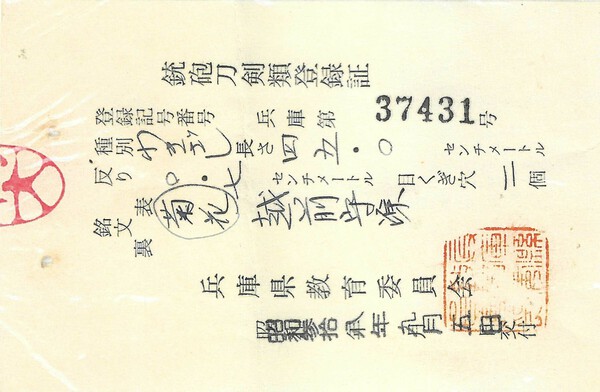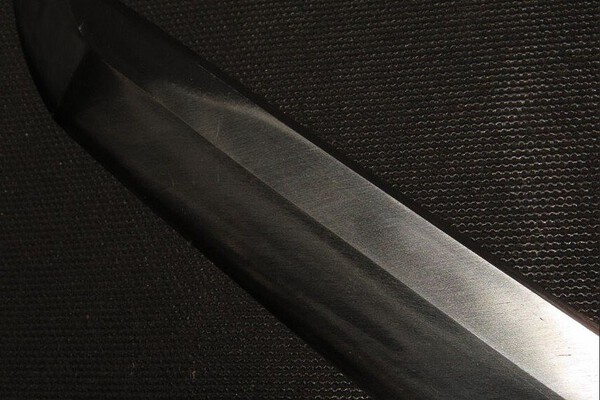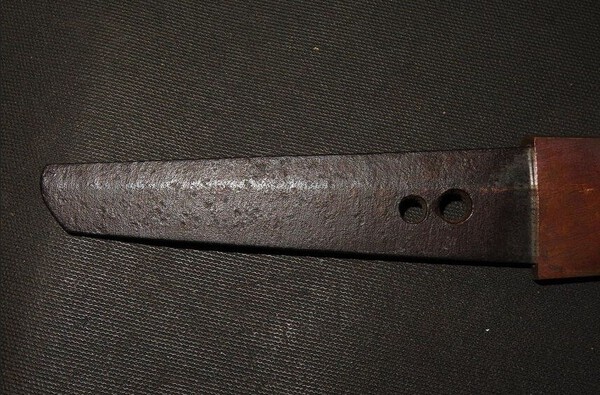-
Posts
12 -
Joined
-
Last visited
Content Type
Profiles
Forums
Events
Store
Downloads
Gallery
Everything posted by HVM
-
Very informative! Thank you. I will do my best making good photos soon.
-
The first four characters seem to match mine. I am just missing the last three. So probably hard to give it a final verdict on the maker I guess. Not that that changes anything for me, as I really like the condition it is in and the craftmanship it is showing to me.
-
Thank you all for this valuable information. I will try and make better pictures with as little glare and reflections as possible. But if I understand it correct, the true name of the smith is not on the tang anymore, due to the cut off? I am missing the last three characters. Why would they do this? As I look at the cut-off part, it must have probably been done very long ago, as the rust and patina looks simmilar as the rest of the tang.
-
Hello everyone, It's been a while since my last post, but I'm excited to share that I've recently acquired a beautiful Wakizashi crafted by Echizen-no-kami NOBUYOSHI. Unfortunately, the tang is shortened, which is a bit of a drawback, but the signature (Mei) is still clearly visible. Might this have been a katana back in the days? I believe the original polish remains intact, and I've also noticed what appears to be the signature of the original polisher (if my information is correct). I'm eager to hear your knowledgeable insights regarding my new acquisition, particularly if there's more information available about the smith. For instance, I'm curious about the significance of the emperor flower motif on the blade. Would that mean that Echizen was in service to the emperor? Below is the information I've gathered about this Wakizashi: Nakago (tong): The tang is shortened, with two mekugi-ana mounting holes. It features O-Sujikai (strongly left sloping) file marks with Kesho (horizontal) file marks. The signature on the obverse includes a KIKU flower emblem with above the support hole, followed by the official district title Echizen-no-kami 越前守 awarded by the Imperial Court, the name of the Fujiwara clan 源, and the blacksmith name NOBUYOSHI 信吉. The NOBUYOSHI 信吉 family traces its origins to the first blacksmith Takai Shinano-no-kami NOBUYOSHI 高井信濃守信吉, who was related to the Mishina 三品家 family in Kyoto during the early Edo period in the mid-17th century. Both the MISHINA and NOBUYOSHI families regularly chiselled the KIKU (imperial seal) emblem. The sword maker in question, Echizen-no-kami NOBUYOSHI 越前守信吉, is believed to be the son or younger brother of the first blacksmith Shinano-mo-kami NOBUYOSHI 信濃守信吉 in Kyoto, who established a branch in Settsu (Osaka). Despite being an old polish, the wakizashi still shows some dark spots on the lower back, which can be completely removed by touch-up. It retains a rich volume and abundant Hiraniku (leaf flesh), and the tang (nakago) shows clear chisel marks of inscriptions indicating an age of 330 years or more. Both NTHK and NBTHK certificates are included. Old Polish/state: The sword is in very good condition and falls within the scale mint-excellent-very good-good-fair-poor. It comes with a single-layer Habaki collar with gold foil and is preserved in a simple wooden Shira-Saya mounting.
-
Thank you all for the advice and tips. I will give these a try and let you know what worked.
-
I have an Edo period Wakisashi with a Habaki (Brass or Copper) which is stuck as a house. I think a previous owner tried to loosen it with a hammer and screwdriver, but apparently without success. But some minor damage as a result. Is there a way to get it loose safely, without damaging the Wakisashi itself.
-

Is this a period correct Wakisashi?
HVM replied to HVM's topic in General Nihonto Related Discussion
Thank you. Great links. Beautifull swords over there. I am now often looking at Catawiki. -

Is this a period correct Wakisashi?
HVM replied to HVM's topic in General Nihonto Related Discussion
Thank you all very mutch for giving me feedback on this Wakisashi. I am happy that I am at least able to determine that this is a period correct one. The polishing I did not notice. I also don't see a clear Hamon. Is that common for this smith? Or is it removed by polishing? I will defenatly further educate myself. Already bought some books on this topic. But from my experience, the best education comes from reading books, and learning from the experienced experts. Thank you. -

Is this a period correct Wakisashi?
HVM replied to HVM's topic in General Nihonto Related Discussion
-
Hi all I am looking to buy this Wakisashi. Looking at the available photos I believe to see the Tamagahane grain and the tang and habaki looks to be correct to me. But I'd love to hear the opinions of the experts on this Wakisashi. The information given by the Wakisashi says it is from the Edo period and made by 'Housyu Ju Fujiwara Masayuki'. Is that correct?
-
Hi everyone. My name is Hylke and I am from the Netherlands. My son and I already collect WW2 and WW1 militaria for a while now, and build a nice collection of different items. But I have a special interest (love) for Japan history, craftmanship and beliefs. In the past I already purchased a few original netsuke's and high quality replica katanas, but now I want to buy an original old wakisashi or katana from Tamahagane steel. Collecting WW2 militaria, I learned, through trial and error, that I need to research the item before purchasing. And above all, using the knowledge of the specialists in the field. I do hope that within this area fewer counterfeits exist than in the Third Reich militaria. Looking forward to be learning a lot about this on this forum.






















